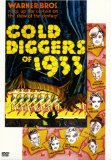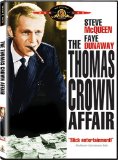I had the television on the other night just in time to catch the opening credits of the 8:00 movie on Turner. It reminded me of just how fine some of those title sequences can be.
Of course one would never buy a movie ticket just because of its titles. But that may be mostly because you’ve already committed to the ticket price of a movie before you ever get to see them. Nevertheless, the best examples do seem to set a tone for what’s to follow, if not really lay out (in some coded way) everything that lies ahead for the next 90 to 120 minutes.
Through most of the 1920s and 30s, American movies followed a style of introduction that was pretty much standardized for the studio that produced them. It was as if the purpose of those introductory screens was to announce the studio’s brand rather than anything too particular about this individual product. That fact makes some examples of title sequences truly remarkable.
Things had changed by the 1940s when each movie seemed more overt in its inclusion of the opening credits inside the world of its story. But even with this shift in norms, there are examples that stand out among their peers. Here’s a sampling from each of the decades up through the 1970s.
1920s
Sunrise (F. W. Murnau, 1927)

Murnau had made a name for himself as a director of remarkably subtle and expressive movies before he come to Hollywood. Nosferatu (1922) and Der letzte Mann (The Last Laugh, 1924) push the limitations of storytelling in their inventive uses of framing, movement and multiple exposures.
So it makes sense that his first American movie, Sunrise, wouldn’t be just another product of its studio, Fox. It presents itself as a work of fine art. And that presentation begins with the title sequence, using stylized type, a statement about the nature of the human condition, and a cast of characters without proper names.
And it’s pretty, too.
1930s
Gold Diggers of 1933 (Mervyn LeRoy, 1933)

Warner Brothers had brought the movie musical back from an early grave with the success of its 42nd Street (1933). The backstage melodrama of that story mixed with the inspired camera work and choreography of Busby Berkley made for a winning combination that the studio would try to recycle several times over.
Gold Diggers has no pretensions to fine art. And, appropriately, its opening credits prepare the audience for what lies ahead, much as the overture to a stage review would. What’s so lovely about this example is the way it slides nearly seamlessly from the static title cards over that overture into its opening number. It blends the cast credits right into the first appearance of the chorus and Ginger Rogers’s inspired delivery of “We’re In The Money.”
(If you’re at all interested, I’ve babbled on at length about this remarkable movie in a series of earlier posts.)
1940s
Mildred Pierce (Michael Curtiz, 1945)

A melodrama steeped in the dark shadows of film noir; a woman’s picture crossed with a crime drama; a story of a mother’s love amidst tawdry sexual intrigue. Mix a Hollywood star in the second phase of her impressive career with a really dirty story by James M. Cain and you get this Warner Brothers spin on the original novel.
I love this movie as only a middle-aged homosexual could. But I still can’t decide if these opening credits are inspired or just insane. Whichever it is, they do seem to encapsulate the tone of the movie that follows.
1950s
Vertigo (Alfred Hitchcock, 1958)

Has there ever been a darker and more moving dive into the depths of sexual obsession than Alfred Hitchcock’s Vertigo? Well, I won’t get into all of that just now; this movie is too close to my heart not to bore you with a long series of emotional posts about its majesty and wonder at some later date.
But, for the present, I will ask you to consider how beautiful the opening titles are, crafted by the brilliant designer, Saul Bass (who gave us the corporate logos for Dixie, Geffen Records and United Airlines, as well as the title sequences for Psycho, North by Northwest, The Man with the Golden Arm and Around the World in Eighty Days).
Everything you need to understand about this movie is contained in this opening sequence, encrypted in such a way that it demands your full attention and participation before you can unfold its meaning. The deconstruction of a beautiful woman’s face; the spirals that grow out of and recede back into her iris — abstractions of form, color and movement; and the whirling, circling, haunting score by Bernard Hermann. Hell, it’s worth owning the disc just to play these opening credits over and over again.
1960s
The Thomas Crown Affair (Norman Jewison, 1968)

It was watching the opening credits to The Thomas Crown Affair that got me started down this path in the first place.
First of all, they’re just so much fun to watch. They’re stylish, they’re inventive and they seem to have about as much to do with a romantic cat-and-mouse crime story as they might with a mid-60s editorial spread in Vogue.
But then you realize that this movie has very little to do with its surface story of Faye Dunaway, the insurance investigator, pursuing Steve McQueen, the rogue-playboy-millionaire-bank-thief and everything to do with sports cars, fabulous outfits and lots of mascara. What circumstance of profession or hobby throws them together is much less important here than how great they look once they find themselves in the same well-appointed rooms, sipping cognac and playing chess.
He in his blue blazers and fast cars. She in her Mary-Quant-inspired dresses and Carnaby-Street eye makeup. The Michel Legrand song performed by Noël Harrison (who, to me, will always be the very well-dressed sidekick to Stefanie Powers, The Girl from U.N.C.L.E.) And the multiple frames with the images moving within: the whole sequence is a study in graphic mannerism (carried through in the movie). This is a slice of style out of time that makes me salivate for monkstrap shoes, pegged trousers and long sideburns.
1970s
Nashville (Robert Altman, 1975)

At the end of this rather long list is a movie that seems to make fun of popular culture at the very same time as it’s presenting us with a marvelous work of art.
Like most of Robert Altman’s movies, Nashville is a loose and somewhat irregular piece of fabric, woven from an odd selection of individual narrative threads. As those threads pass in and out of view, the whole piece threatens to unravel all together. It’s both satire and a sincere portrait of its characters’ lives. It feels like a snapshot of a specific moment in American culture, and a vivisection of the larger essence of what defines Americans in the 20th Century.
Its story, its structure threaten to come undone, but they never do. And somehow, that possibility that it may all spin out of control keeps us on the edge of our seats. It’s exhilarating and moving and deeply beautiful, even as it makes us titter and guffaw.
These opening credits are somehow part of its message. But to say exactly what message they might contain would somehow cheapen the whole thing. So I’ll just let you take it in.
